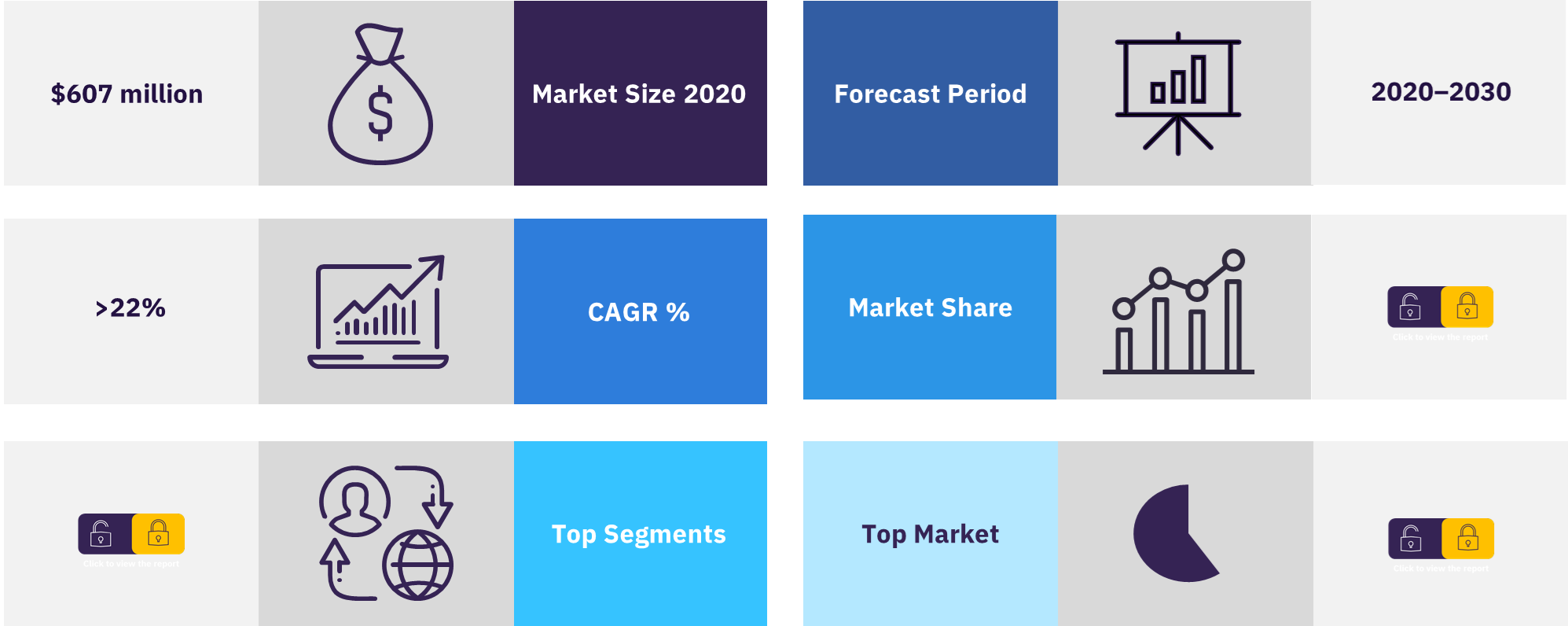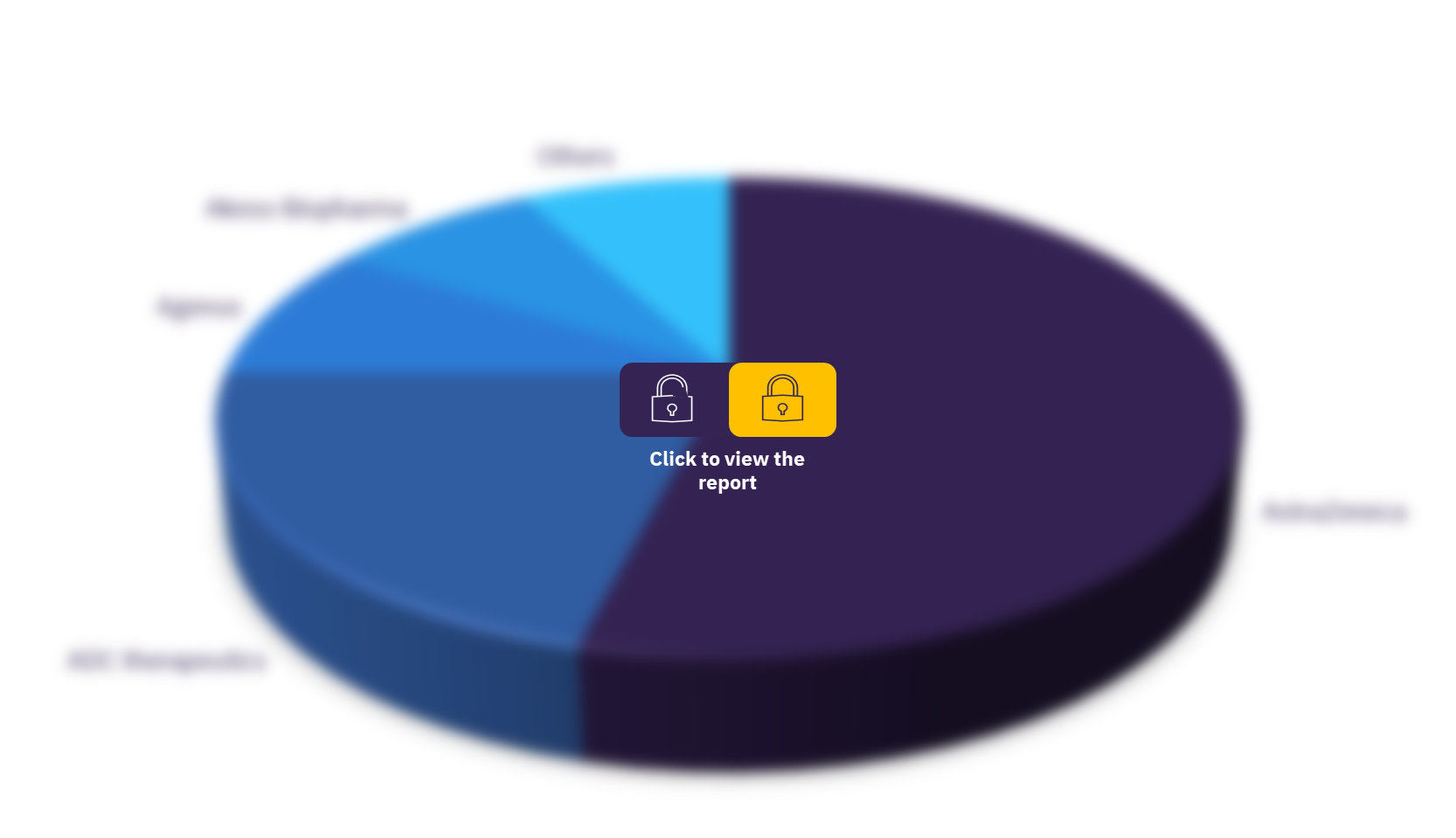Cervical Cancer Market Size and Trend Report including Epidemiology and Pipeline Analysis, Competitor Assessment, Unmet Needs, Clinical Trial Strategies and Forecast, 2020-2030
Powered by ![]()
All the vital news, analysis, and commentary curated by our industry experts.
The cervical cancer (CC) market was valued at $607 million in the 8 major markets (8MM) in 2020. The market is projected to grow at a CAGR of more than 22% during the forecast period.
The cervical cancer market report provides an overview of the risk factors, comorbidities, and global and historical trends for cervical cancer in the eight major markets (8MM) (US, France, Germany, Italy, Spain, UK, Japan, and Urban China). It includes a 10-year epidemiological forecast for diagnosed incident cases of CC. The diagnosed incident cases of CC are further segmented by age (18–29 years, 30–39 years, 40–49 years, 50–59 years, 60–69 years, 70–79 years, and 80 years and older) in these markets.
Cervical cancer market overview
For more insights on this report, download a free sample
What are the market dynamics in the cervical cancer market?
Chronic infection with high-risk oncogenic subtypes of the human papillomavirus (HPV) is the main etiological factor in cervical carcinogenesis, with HPV infection detected in almost all CC cases (Senapati, Senapati and Dwibedi, 2016). HPV infection of the cervix is primarily contracted via sexual intercourse. HPV 16 and 18 are the most common HPV sub-types leading to CC.
The most common subtypes of CC are squamous cell carcinomas, which arise from the squamous cells that cover the outer surface of the cervix (ectocervix). Adenocarcinomas arise from the glandular cells that are scattered along the endocervical canal (inner surface of the cervix). Patients can present with both squamous and glandular cancer cells, giving rise to a diagnosis of adenosquamous carcinomas.
What are the key age segments in the cervical cancer market?
The cervical cancer market can be segmented by age into 18-29 years, 20-29 years, 30-39 years, 40-49 years, 50-59 years, 60- 69 years, 70-79 years, and above 80 years.
In 2020, for the 8MM combined, adults ages 40-49 years contributed the highest proportion of the diagnosed incident cases of CC. In the US, Italy, Spain, Japan, and urban China, the peak diagnosed incident cases of CC by age occurred in ages 40-49 years. In France and Germany, the peak diagnosed incident cases occurred in ages 50-59 years, and in the UK, the peak diagnosed incident cases occurred in ages 30-39 years. In France, Germany, Italy, Spain, Japan, and urban China, the diagnosed incident cases of CC were lowest in ages 18-29 years, and in the US and the UK, cases were lowest in ages 80 years and older. In the 8MM, urban China had the highest diagnosed incident cases of CC in ages 40-49 years with 23,716 cases, and the lowest diagnosed incident cases of CC were in Spain in ages 18-29 years with 35 cases. This difference in age-specific cases might be driven by the underlying population trends in the countries.
Cervical cancer market, by age
For more age segment insights, download a free sample
What are the key stages in the cervical cancer market by FIGO?
The cervical cancer market by FIGO can be segmented by stage into stage IA, stage IB1-2, stage IB3, stage IIA1, stage IIA2, stage IIB, stage III, stage IVA, and stage IVB. In the 8MM, the highest number of diagnosed incident cases of CC was in stages IB1-2, followed by stage IA, and stage IIB.
Cervical cancer market, by stage
For more stage insights, download a free sample
Which are the eight major markets of cervical cancer?
The eight major markets (8MM) of cervical cancer include the US, France, Germany, Italy, the UK, Spain, Japan, and China. In 2020, the diagnosed incidence of CC was highest in urban China, followed by Japan, and Germany, and was lowest in the US. The rate of increase was highest in urban China.
Cervical cancer market, by 8 major markets
For more 8 major market insights, download a free sample
Which are the key companies in the cervical cancer market?
Some of the key companies in the cervical cancer market are ADC therapeutics, Agenus, Akeso Biopharma, AstraZeneca, Betta Pharmaceuticals, Biocad, Bristol Myers Squibb, Exelixis, Genentech (Roche), and Genmab.
Cervical cancer market, by key companies
To know more about key companies, download a free sample
Market Report Scope
| Market size 2020 | $607 million |
| CAGR | >22% |
| Key age segments | 18-29 years, 20-29 years, 30-39 years, 40-49 years, 50-59 years, 60- 69 years, 70-79 years, and above 80 years |
| Key stages | Stage IA, Stage IB1-2, Stage IB3, Stage IIA1, Stage IIA2, Stage IIB, Stage III, Stage IVA, And Stage IVB |
| 8 major market (8MM) | The US, France, Germany, Italy, the UK, Spain, Japan, and China |
| Key companies | ADC therapeutics, Agenus, Akeso Biopharma, AstraZeneca, Betta Pharmaceuticals, Biocad, Bristol Myers Squibb, Exelixis, Genentech (Roche), and Genmab |
Scope
- Overview of cervical cancer including epidemiology, pathophysiology, symptoms, diagnosis, and treatment guidelines.
- Topline cervical cancer market revenue, annual cost of therapy, and major pipeline product sales in the forecast period.
- Key topics covered include current treatment and pipeline therapies, unmet needs and opportunities, and the drivers and barriers affecting cervical cancer therapeutics sales in the 8MM.
- Pipeline analysis: Comprehensive data split across different phases, emerging novel trends under development, and detailed analysis of late-stage pipeline drugs (Phase II – III).
- Analysis of the current and future market competition in the global cervical cancer therapeutics market. Insightful review of the key industry drivers and challenges. Each trend is independently researched to provide qualitative analysis of its implications.
Key Highlights
The main drivers of growth include the anticipated approval and launch of 13 pipeline therapies, the approval of an agent currently marketed in the US across the remaining 7MM, and the label expansion of one currently marketed therapy across the 8MM during the forecast period.
The main barriers to growth in the 8MM are patent expiries including those of Avastin, Keytruda, Imfinzi and Tecentriq.
Among the late-stage pipeline products and marketed agents, immunotherapies are expected to dominate, however Tivdak is expected to be the market leading brand.
The most important unmet needs in the cervical cancer market include: the need for adjuvant therapy in the locally advanced setting, the need for novel agents other than immunotherapies, the need for approval of agents outside the US market, the need for fertility-sparing treatment options, and an increase in HPV vaccine uptake.
Reasons to Buy
The report will enable you to:
- Develop and design your in-licensing and out-licensing strategies, using a detailed overview of current pipeline products and technologies to identify companies with the most robust pipelines.
- Develop business strategies by understanding the trends shaping and driving the global cervical cancer therapeutics market.
- Drive revenues by understanding the key trends, innovative products and technologies, market segments, and companies likely to impact the global cervical cancer market in the future.
- Formulate effective sales and marketing strategies by understanding the competitive landscape and by analyzing the performance of various competitors.
- Identify emerging players with potentially strong product portfolios and create effective counter- strategies to gain a competitive advantage.
- Track drug sales in the global cervical cancer therapeutics market from 2020-2030.
- Organize your sales and marketing efforts by identifying the market categories and segments that present maximum opportunities for consolidations, investments and strategic partnerships.
Agenus
Akeso Biopharma
AstraZeneca
Betta Pharmaceuticals
Biocad
Bristol Myers Squibb
Exelixis
Genentech (Roche)
Genmab
Innovent Biologics
Iovance Biotherapeutics
ISA Pharmaceuticals
Jiangsu HengRui Medicine
Merck & Co.
Mersana Therapeutic
Ono Pharmaceutical
Qilu Pharmaceutical
Regeneron
RemeGen
Sanofi
Seagen
Shanghai Henlius Biotech
Shanghai Miracogen
Shanghai Pharmaceuticals
Synaffix
Table of Contents
Table
Figures
Frequently asked questions
-
What was the cervical cancer market size in 2020?
The cervical cancer market was valued at $607 million in the 8 major markets (8MM) in 2020.
-
What is the cervical cancer market growth rate?
The cervical cancer market is expected to grow at a CAGR of more than 22% during the forecast period.
-
What are the key age segments in the cervical cancer (CC) market?
The cervical cancer market can be segmented by age into 18-29 years, 20-29 years, 30-39 years, 40-49 years, 50-59 years, 60- 69 years, 70-79 years, and above 80 years.
-
What are the key stages in the cervical cancer market?
The cervical cancer market by FIGO can be segmented by stage into stage IA, stage IB1-2, stage IB3, stage IIA1, stage IIA2, stage IIB, stage III, stage IVA, and stage IVB.
-
Which are the 8 major markets of cervical cancer?
The US, France, Germany, Italy, the UK, Spain, Japan, and China are the 8 major markets of cervical cancer.
-
Which are the key companies in the cervical cancer market?
ADC therapeutics, Agenus, Akeso Biopharma, AstraZeneca, Betta Pharmaceuticals, Biocad, Bristol Myers Squibb, Exelixis, Genentech (Roche), Genmab, and Innovent Biologics are the key companies in the cervical cancer market.
Get in touch to find out about multi-purchase discounts
reportstore@globaldata.com
Tel +44 20 7947 2745
Every customer’s requirement is unique. With over 220,000 construction projects tracked, we can create a tailored dataset for you based on the types of projects you are looking for. Please get in touch with your specific requirements and we can send you a quote.
Related reports
View more Oncology reports












